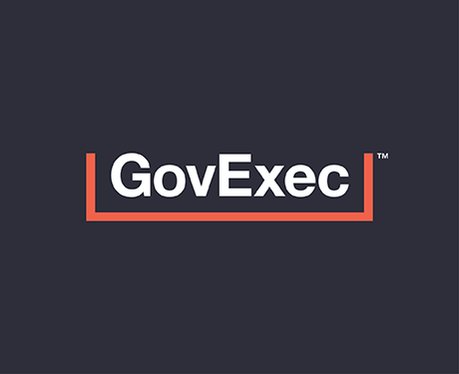2020 was a year of dramatic change. The onset of the Covid-19 pandemic forced the public sector and private sector alike to undergo an overnight transformation in how business was conducted—from moving citizen services online to securing sensitive remote work channels. Technology and modernization continues to play a driving role across government priorities moving forward. James Hanson, Group Publisher, Federal; Vice President and Publisher, Nextgov, shares his perspectives on the top federal IT trends for 2021.
Roadmap to Modernization
This March marked a turning point for federal IT modernization projects when Congress passed a $1 billion infusion of cash for the Technology Modernization Fund (TMF) as part of the American Rescue Plan Act. Then, the Biden administration doubled down with a proposed additional half a billion dollars in the FY22 ‘skinny’ budget. The $1.5 billion investment will enable federal agencies to better respond to the coronavirus pandemic, future national emergencies, and modernize IT systems to provide immediate relief to American families.
Additionally, TMF funds will be used to accelerate shared services and multi-agency modernization projects that are simply harder to get funded under normal budget and appropriations processes. To address previous fund and project barriers, the TMF Board recently made the most significant changes to the repayment model which will go from a 100% requirement for all projects to a three-tier approach that urges agencies to pitch projects that focus hack cleanup, COVID-19 response, or economic recovery by June 2 for maximum repayment flexibility. In the interim, the TMF already awarded one of the largest TMF projects to the Labor Department to improve its data management infrastructure.
Healthcare of Tomorrow
Health technology has never felt more prevalent or more important than in today’s current climate. The COVID-19 pandemic has heightened awareness around the need to revamp and disrupt legacy infrastructure by utilizing modern information technology, allowing for increased access to quality care for both soldiers in the field and civilians. From pandemic response and preparedness to 5G-enabled hospitals and wearables to prevent Traumatic Brain Injury, federal agencies are applying emerging technologies, such as AI, cloud, and DevOps, across the healthcare landscape.
These emerging technologies come with support from the Biden administration. In President Biden’s proposed $1.5 trillion spending roadmap, highlighted initiatives include:
- $6.5 billion to launch the Advanced Research Projects Agency for Health within the National Institutes of Health (NIH)
- $4.8 billion to the Veterans Affairs’ Office of Information and Technology with another $2.7 to convert the agency’s homegrown EHR system and support interoperability with Defense Department systems
- Nearly $9 billion to the Centers for Disease Control and Prevention (CDC) to prepare for the next public health crisis
A 5G Future
No longer just a trendy buzzword, 5G, the fifth-generation technology standard for broadband cellular networks, is heading into adoption, piloting, and implementation stages across the federal government. This technology is set to transform and improve mission outcomes and government operations. Last spring, the Trump administration provided framing around ways the United States will safeguard 5G wireless infrastructure at home and abroad. The ‘National Strategy to Secure 5G of the United States’ strategy discussed approaches around how to, “ facilitate the domestic rollout of 5G; assess the risks and identify the core security principles of 5G infrastructure; assess the risks to United States economic and national security during development and deployment of 5G infrastructure worldwide, and promote responsible global development and deployment of 5G.” This momentum has continued into the Biden administration as well.
One of the most notable projects has been the Department of Veterans Affairs operationalization of 5G technology, which aims to augment several hospitals with 5G capabilities through partnerships with various private sector companies such as Verizon.
Additionally, the Department of Defense sees 5G technology as a game changer for military forces, and is planning on outfitting 12 military bases with 5G technology, investing up to $600 million to develop 5G-enabled smart warehouses, augmented and virtual reality, and radar systems. According to Jody Little, executive program manager of Joint Base San Antonio’s 5G NextGen work, “5G is coming, no matter what we do. We have to have these things working—both on a secure level and on an operational level.”
However, the current 5G ecosystem around the globe is heavily reliant on China, creating supply chain and national security challenges. According to a report by the International Institute for Strategic Studies, “Even if it is assumed that the risk posed by Chinese technologies to intelligence security is low, the ability to harness big data should be of concern to defence industries as it has relevance to future competitiveness in machine learning and artificial intelligence (AI).”
Digital Defenders
In March of last year, the United States federal government, including the Treasury Department, Commerce Department, and National Telecommunications and Information Administration, was subjected to a major cyberattack by a group backed by the Russian government, with at least 200 organizations around the world affected by the attack. The unprecedented nature of the attack has caused the federal government to double-down on digital transformation efforts, including zero trust, endpoint security, and identity and access security.
Zero trust has been of particular interest to federal officials, which moves agencies away from a castle-and-moat approach to one that requires reconsidering cybersecurity strategy as a whole. According to Federal Chief Information Security Officer Chris DeRusha, “I really believe it's rooted in three core principles: verifying every user, validating every device, and then within that, limiting access intelligently. This is obviously a shift away from the prior trust model that assumed if a user is behind a firewall, then you know they can be trusted. Obviously, this isn't bearing out anymore.”

